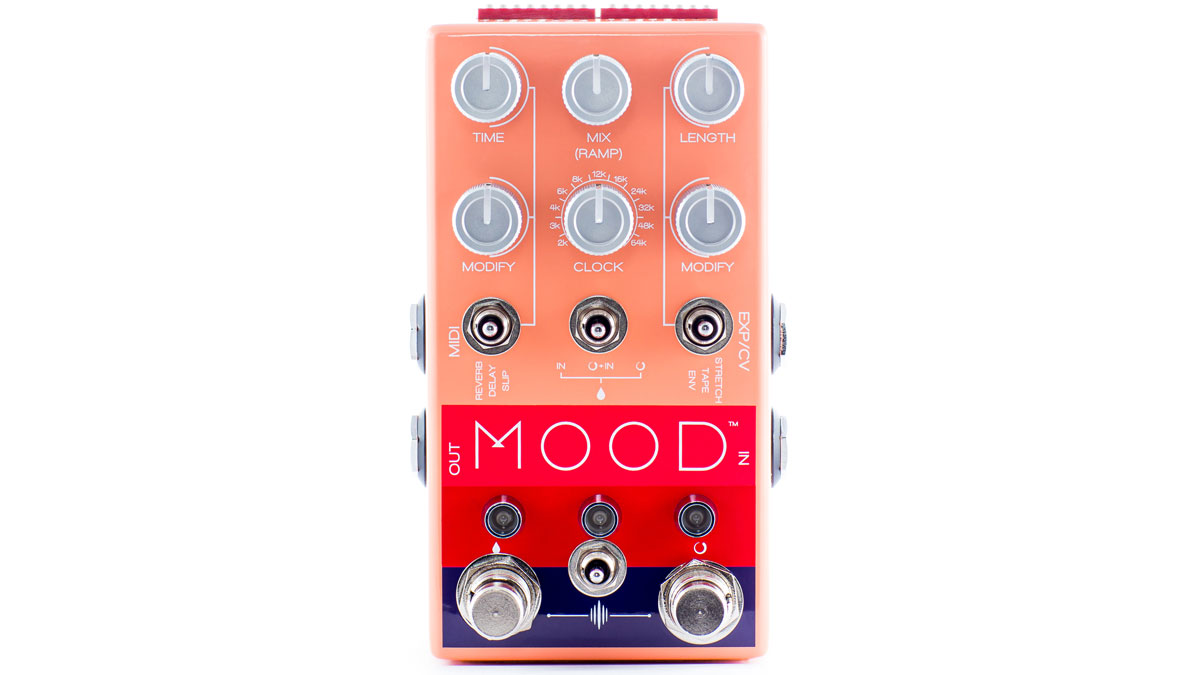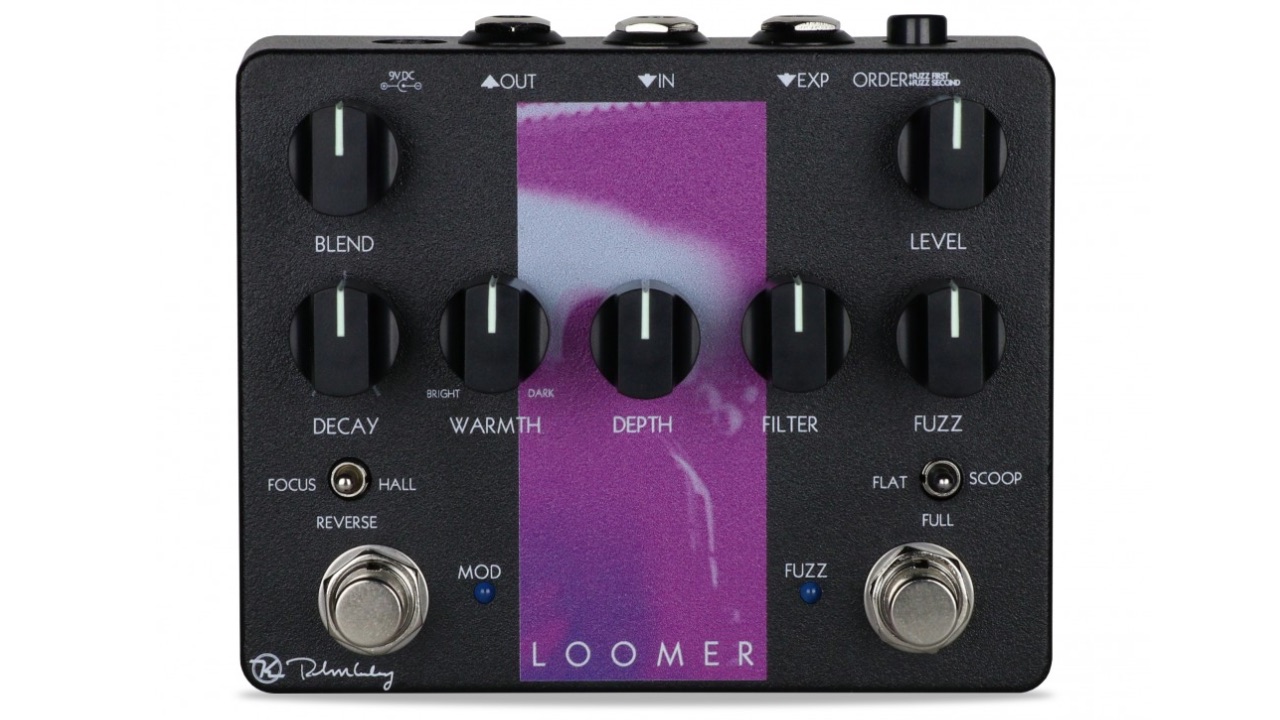5 great multi-function guitar effects pedals you need to try
Save some space and cash with these combined stompboxes
Without wanting a multi-fx pedal, many players are still in a constant search for ways to save pedalboard real estate. As well as using dedicated mini pedals, a common way of maximising the space on your board is combination pedals. For a long time, the only real option was to say, combine a drive and boost in one box. However, miniaturisation has meant that all manner of weird and wonderful effects can now be paired together in small enclosures.
History in brief
Since compact stompboxes have existed, some players have looked to streamline them, either for ergonomic reasons, or to save space. For modern players like Russell Lissack or Ed Sheeran, rehousing pedals to improve their ergonomics or ability to survive touring is commonplace.
For your average player though, the impetus is much more likely going to be space-saving, rather than the demands of the road. Pedals like the Paul Cochrane Tim are examples of this space saving - a drive and boost in the same enclosure.
Elsewhere, options like the unobtanium King of Tone offer two full-fat drive pedals in a single enclosure, for maximum flexibility with the added bonus of eating up minimal square-inches on your pedalboard.
Likewise, Electro-Harmonix's Deluxe line of pedals brings together many of their Nano-series devices in big (but not too big)-box, conjoined formats.
Obviously there's a tradeoff here. By putting two pedals in one box, you generally lose a great deal of freedom, depending on how they are routed. Some allow you to change the ordering, but few include an FX loop between the two sides, meaning that they function as a single 'block'.
This isn't much of an issue for drives and boosts, which are normally in the 'drive' block of your pedalboard. It could be an issue with other pairings, however.
Want all the hottest music and gear news, reviews, deals, features and more, direct to your inbox? Sign up here.
With miniaturisation and improved DSP in the 2000s, it became possible to start putting multiple digital pedals in one unit. Even so, the combination of cost and lack of flexibility means that this isn't a common design choice. There are usually three situations in which it makes sense to tightly integrate two or more digital circuits.
The first is a collaboration between boutique builders; the second is for a unit designed as a signature pedal, or to emulate a specific guitar sound that requires more than one effect. The third is for effects that have a very common order of placement, such as delay into reverb.
We'll see examples of all three of these in our choices below.

Walrus Audio Slarp
Specifications
Reasons to buy
Reasons to avoid
If you want both a Walrus ARP-87 delay and the Slö Textural Reverb, then this might well be the box for you. It's worth saying that while the 'Slarp' is cheaper than buying the two pedals separately, it's moot whether this saves much space, since both are top-mount jacks. It dispenses with the side-mount expression jack, so that saves a few millimetres.
As on the two original pedals, you get four algorithms on the delay side - digital, lo-fi, analogue and slapback. On the reverb side you get an octave down reverb, ambient swell and a latching pad reverb, with some ability to change wave shape and modulation on the reverb tails.
The default order is internally routed so that you can plug into the input of the ARP-87, and out from the Slö, and everything will function as you expect. However, if you want to change the order, there's no internal switching to do so.
On the top of the enclosure, each side has independent inputs and outputs. While this is more fiddly to switch the order, it does mean that those with multi-switchers or a different pedal position in mind, like the delay several pedals before the reverb, can do this.
In a sense, it's the simplest solution that offers the maximum flexibility, at the cost of not being able to easily switch the order 'in the box'.
Alternative: Walrus Audio Slö

Chase Bliss Mood
Specifications
Reasons to buy
Reasons to avoid
The Chase Bliss Mood is a supergroup, or at least a super-collaboration of the pedal world. The MIDI controls and 'brain' of the pedal come from Chase Bliss, with their usual pattern of complex control parameters and dip switches, but its 'heart' is two weirdo pedals in one, combining looping, reverb and delay.
Eccentric Belgian boutique builder Drolo designed the loop channel, presumably taking experience gained from their excellent Molecular Disruption Device and Stammen pedals.
The second side is a wet channel, with reverb and delay effects courtesy of - well, also eccentric - US boutique builders Old Blood Noise Endeavors. With pedals in their line-up like the Rever, Dark Star, and Dweller, they know their way around designing exciting and unusual delay and reverb circuits.
The Mood is a micro-looper, but that doesn't cover the full breadth of possibility that it represents. Digital delay works by recording a buffer of audio and playing it back, so in a sense, a delay is a micro-looper too.
Both sides of the Mood are geared towards recording input and manipulating it heavily. They also bear the strong influence of their creators.
There are three different ways of routing these two circuits, as well as the possibility to manipulate the clock. This results in radical pitch shifts and smears that are similar to the warping possibilities of pedals like the Count to Five, or Digitech XP-300.
Alternatives: Montreal Assembly Count to Five, Red Panda Tensor, Drolo Stammen

Keeley Loomer
Specifications
Reasons to buy
Reasons to avoid
The gauzy 'glide guitar' that put Kevin Shields and MBV on the map is their most recognisable guitar tone. Over the years, many players have sought to emulate it, and the Keeley Loomer brings the effects needed into a single box.
It's a fuzz into a reverb, with some additional tone options on the fuzz and reverb patches geared toward dream-pop.
As aficionados no doubt know, the 'glide' sound is created by running a distorted Jazzmaster into a reverse reverb, and manipulating the tremolo arm while playing. Shields used rack gear like the Alesis Midiverb II and Yamaha SPX-90, but reverse reverb no longer requires such heavy-duty kit.
The Loomer has a Hall patch, Soft Focus, which emulates the Yamaha FX500, and the main attraction - a reverse reverb built around a reversed delay line.
To get his distortion tones, Shields used any number of fuzzes and amps, including running straight into the console and jamming the faders up. However, the Loomer cuts through the middle of these options and selects the Big Muff as its clipping circuit.
As well as the standard circuit it has a three-position switch for altering the function of the tone stack, so you can dial the fuzz in to the rest of your chain.
Alternative: Keeley DDR

Source Audio Collider
Specifications
Reasons to buy
Reasons to avoid
Not every pedal needs to be super-limited edition and hand-soldered in a basement by monks. Witness the Source Audio Collider, a digital reverb and delay combination that combines their top-of-the-line Nemesis Delay and Ventris Reverb pedals. Unless you need specific patches from those pedals that aren't here, this can replace both on your board.
Many high-end digital pedals within a series run on the same hardware and processor, for instance the BOSS 500 series or Strymon units. As these pedals can presumably run algorithms from other units in the line, players find themselves wondering why they don't.
Granted, it's likely more complex in reality than it seems on the outside, and there's of course a financial and practical incentive to want to divide the line-up by function.
Regardless, we'd be inclined to guess that the RV-500 has sold fewer units than the DD-500, and given the number of forum threads about using multi-tap delays to emulate a passable reverb patch on the DD-500, we're not the only options looking to use a high-end delay as a reverb.
Enter the Collider. It has two completely independent DSP processors, meaning it can run its reverb and delay patches independently, with a dedicated footswitch for each. To that end, it's got five delay patches and seven reverb options, with preset saving and full MIDI control. The patches cover all the most popular delay and reverb options. The only thing missing is the Ventris' reverse reverb, but it's hardly a deal-breaker.
The pedal is full stereo, and there's the ability to assign any combination of controls, as well as direction, to an external expression pedal.
Alternatives: Line 6 HX Stomp

EarthQuaker Devices Life Pedal
Specifications
Reasons to buy
Reasons to avoid
Conceived as a limited collaboration between EarthQuaker Devices and Sunn O))) for the band's Life Metal album, the Life Pedal quickly sold out its initial run, becoming an instant cult classic.
The Life Pedal is three stages, with two of them being footswitch controllable. The first is an octave fuzz, inspired by out-of-control vintage octave fuzzes like the Shin-Ei FY2 and FY-6. It's a green ringer octave front end into a ProCo RAT clone, with the vintage-correct LM308 chip.
The second footswitch is for the boost section. You'd expect an EQD Acapulco Gold, based on the first half of the circuit. Instead, the Life Pedal has a MOSFET boost, more like that found in the Z-Vex SHO.
Caving to consumer demand, EQD brought back the Life Pedal in a slightly less limited run, placing it inside a standard enclosure to bring the cost down. This also had the benefit of being slightly more pedalboard-friendly in size.
This run also sold out. As a result, used prices are eye-watering, but it is a unique unit. While it's not impossible that EQD will bring the pedal back in some form, if you're desperate to try it, you might have to build your own, or brave the used market.
Alternatives: Frederic Effects Super Unpleasant Companion, ProCo RAT, EQD Tentacle
Alex Lynham is a gear obsessive who's been collecting and building modern and vintage equipment since he got his first Saturday job. Besides reviewing countless pedals for Total Guitar, he's written guides on how to build your first pedal, how to build a tube amp from a kit, and briefly went viral when he released a glitch delay pedal, the Atom Smasher.
